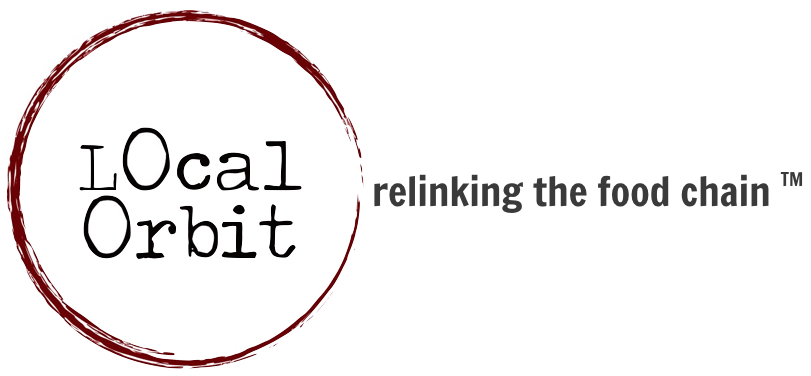Kymm Mutch is a pioneer in farm-to-school sourcing. She will be a Discussion Catalyst at Local Orbit’s upcoming workshop, Transparency, Collaboration & Shared Value in Local Food Economies, November 7-9 in Ann Arbor.
As the Administrator of School Nutrition Services for Milwaukee Public Schools, Kymm developed farm-to-school sourcing and honed her expertise in USDA meal program administration, procurement, community education, group facilitation and supply chain development.
Currently, she is the VP of Products and Services for Food Service Management Solutions. Kymm also consults with farmers, processers, and food hubs to design sustainable local supply chains through Mutch Better Foods.
We asked Kymm about the challenges and opportunities in local procurement for K-12 Schools.
What’s the biggest challenge you see for schools purchasing local food?
The biggest challenge for schools purchasing local food is a fundamental understanding of the value of making local purchases. Many food service operators really don’t feel they have the knowledge about available local products, lack the time to do research, are fearful of product cost and are unclear how local foods can fit into the USDA meal pattern guidelines. The meal pattern guidelines of the Healthy Hunger Free Kids Act (HHFKA) were designed to encourage fresher produce and items made from scratch while at the same time creating more specific mandates for menu components. For some school food service staff, they avoid local and scratch made items for the security of packaged, Child Nutrition (CN) labeled products. As food service staff become more comfortable with the guidelines, they are more willing to venture out into locally sourced, fresh foods that may take some preparation.
What has evolved in local food procurement over the past 5-10 years?
The use of a Request for Information (RFI) to find out what products local suppliers have, their capacity to meet the school food criteria and the ability to educate students and the community about their local products. This first step starts a conversation between supplier, processor, distributor and school district to better understand each other’s role in the supply chain and to be more clear about how all players need to collaborate to build the new paradigm.
Proper procurement is a very big topic for schools, state agencies and the USDA. New regulations and guidelines are being taught to school food service personnel for standard procurement and monitored under USDA meal program reviews. New guidelines for small dollar purchases that are typical of farm to school activities offer new opportunities when used carefully. All of this offers new opportunities and potential for misunderstandings.
What lessons have you learned from your work on supply chain development with food hubs and suppliers?
The USDA meal programs offer opportunities for connections to local hubs that help shape future purchases. Suppliers who understand the budget that schools are working within find opportunities like produce seconds, under-used portions of chicken (drumsticks and thighs) and coordinating institutional buyers to create a steady demand. They might not make farmer’s market prices, but their cost of doing business may actually be less. The up front work that is needed to supply products to the USDA meal program is intense, but once established, it is pretty straightforward and provides a long term, larger volume, year over year relationship that can be fiscally and socially rewarding.
As a former hub camp participant, how did that experience influence and change your work?
Hub camp helped me to shape the tenants of my business, move from my background of working in a non-profit setting into thinking about how to be cost effective and fiscally careful. I also was amazed at the people that attended, loved hearing about the things they were trying, how they were creatively problem solving and how willing they were to help each other grow their respective businesses. The caliber of speakers was outstanding, the variety of experience in class participants was inspiring and I formed relationships which I continue to network with three years later.
What makes you hopeful about the local food system?
Young people and people who are young at heart that are willing to try something new, bring a wealth of knowledge to a pretty traditional business and see new ways of moving forward that discards the not useful and focuses on the problems that need to be solved. So much of the local food system is built on relationships, trust and a desire to create change for the better and/or leave a legacy. It feels like people working to build the local food system have their values aligned with striving for the greater good.
Is there one thing institutional foodservice operators can do today to increase local purchasing?
Because most institutional food service operators must function in a structured procurement system, they need to learn to rewrite their product specifications for local varieties and ask the suppliers to share their stories so that food service operators can use them for marketing. And lastly, they need to work together. Institutional food service rarely has competition with other institutional food service operations. Work together, align their specifications and then go to the market with a unified request. This takes time, engagement and willingness to learn. The rewards are quality food, economic impact in their community, and a powerful story to tell.
You’ll have the opportunity to work directly with Kymm, along with a stellar group of supply chain innovators, at Local Orbit’s workshop, Transparency, Collaboration & Shared Value in Local Food Economies, November 7-9. Apply now!

